Nautilus, Corsair navigate Lincoln SUV pool
By John Gilbert
Ford sets a strong pace with its industry-leading truck business, supporting the always-popular F-150 pickup with a fleet of SUVs that range from the gigantic Expedition to the Explorer and down to the Edge and Escape — plus the new Bronco — getting into the more compact vehicles. It is less noted that Ford branches out into the luxury category through its Lincoln arm, which used to feature luxury cars before going into luxury SUVs.
The gigantic Navigator is king of the Lincoln line, and it has gotten corporate support to be more than an Expedition with Bling. Next down in the Lincoln lineup is the Aviator, which is a rekindled name from the recent past on a new vehicle that can steal customers from the Navigator by being more maneuverable in traffic. The focus today, you should pardon the expression, is further down the order to the Nautilus and the Corsair, the newest pair of stylish SUVs that deserve consideration by anyone seeking a new niche — a capable luxury SUV that combines sporty flair and agility with that luxury. The Nautilus and Corsair both check those boxes..
Both carry nautical themes, with the Nautilus taking its name from the Jules Verne classic, “20,000 Leagues Under the Sea.” That was definitely appropriate when I spend a week with a Nautilus recently, its paint was beautiful, called Flight Blue, instead of something such as Deep-Sea Blue, while Flight Blue might be more appropriate on Aviators. The conditions made up for that transgression, though, when the bright, sunny day in Duluth, Minn., took a sudden turn and hit the area with a sudden, surprise thunderstorm.
My wife, Joan, and I were wandering through Target trying to remember what we needed at the time, and when we came out, the sky in the East had swapped its beautiful blue for a sullen black cloud heading out over Lake Superior. It passed quickly enough so the setting sun could illuminate its underside and create a sensational double rainbow. which arched up as though providing a halo for the Nautilus.
I couldn’t resist doing a quick-draw for my iPhone and firing off a few photos, one of which you can see here. We hopped inside as the last drops fell, and we didn’t get any wetness on the pristine whie leathre bucket seats, which complemented the luxury feel of the white-leather-trimmed steering wheel..
The Corsair is decidedly smaller than the Nautilus, though no less luxurious inside. Well, maybe a little less luxurious, but still plush enough to be no less comfortable and full of creature features. It was a glistening, metallic Pristine White, with an interior featuring smooth Beyond Blue leather seats.
These two cars stand on their own, but for folks like me, who can’t resist digging beneath the sticker sheet, the Nautilus is based on the Explorer platform and powertrains, while the Corsair is lower, smaller and lighter, built on the same platform and drivetrain as the Escape, which also serves the new Bronco.
The Nautilus was powered by Ford’s potent 2.7-liter V6 with 335 horsepower and 380 foot-pounds of torque. thanks to twin-turbochargers pumping air into the combustion chambers, with an 8-speed automatic. Its sticker was $68,295, which tells you how well equipped the Black Label model is, because its base price is $65,090, and the only options added on were enhanced active park assist, 360-degree camera, lane-centering in its adaptive cruise control, a cargo utility package, the roof rack with satin side rails, and the ultra-comfort 22-way power seats.
The Corsair, on the other hand, jumped from a $45,090 base to $57,680 with the technology package, sport package, “perfect position” 24-way power leather seats, and adaptive suspension.It was powered by a very capable 295 horses and 310 foot-pounds of torque, from a 2.3-liter 4-cylinder, also turbocharged. All the prescribed safety assets are included, as is a 14-speaker Revel audio system, plus stop-start and remote starting.
Regular readers of this column are well aware that I prefer more compact vehicles for their agility and fuel-efficiency benefits over gigantic vehicles with lots of power to move but a commensurate decrease in miles per gallon, and comparing these two earns my usual choice. The Nautilus 2.7 V6 could stretch out and get over 20 mpg, although it was in the 17-18 range in city driving. The Corsair routinely got up to mid-20s, although the EPA estimated 28 highway was a stretch.
The Nautilus is not too big, and in my mind has a clear advantages over, say, the Navigator,. Bu tits edge in quickness fades against the smaller Corsair, which feels quicker and more agile in comparison. The Nautilus has a bit more plush comfort, although it is still firm enough on corners to feel sporty. Conversely, the more compact Corsair, while sportier, is still plenty compliant and comfortable.
Both vehicles had all-wheel drive, as well as 8-speed automatics, but features such as paddle shifters rdon’t seem as significant on the larger Nautilus. On the Corsair, paddles add a definite dash of sportiness, and in Duluth, they are very useful when you want to downshift while descending all those hills. You can probably add a couple years to your brake life by using the paddles to hold your speed under the pace that gravity could help hurtle you into the big lake if you didn’t watch it.
The seats in both vehicles have obviously received special attention from engineers, who have seen to it that being a Lincoln should mean more luxury and comfort than the equivalent version wearing Ford insignias. The seats design and structure definitely works to accomplish that objective.
Both the Nautilus and Corsair are major pluses for Lincoln, which has spent its lifetime trying to earn respect from its more popular Ford siblings. And the Nautilus and Corsair both have enough to offer to lure customers to visit the showroom, and a short test drive in either one might convince a prospective customer to go Lincoln.



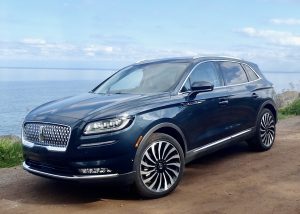
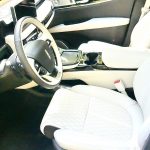
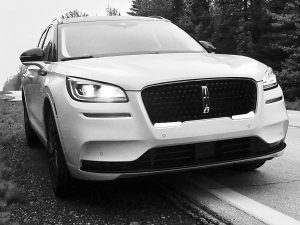
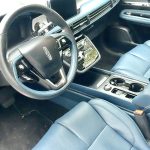
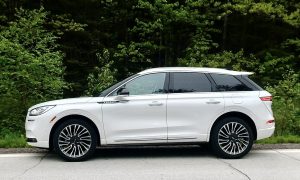
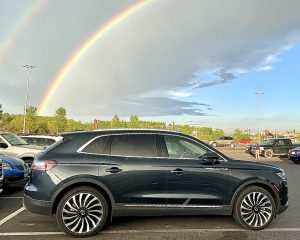
 John Gilbert is a lifetime Minnesotan and career journalist, specializing in cars and sports during and since spending 30 years at the Minneapolis Tribune, now the Star Tribune. More recently, he has continued translating the high-tech world of autos and sharing his passionate insights as a freelance writer/photographer/broadcaster. A member of the prestigious North American Car and Truck of the Year jury since 1993. John can be heard Monday-Friday from 9-11am on 610 KDAL(www.kdal610.com) on the "John Gilbert Show," and writes a column in the Duluth Reader.
John Gilbert is a lifetime Minnesotan and career journalist, specializing in cars and sports during and since spending 30 years at the Minneapolis Tribune, now the Star Tribune. More recently, he has continued translating the high-tech world of autos and sharing his passionate insights as a freelance writer/photographer/broadcaster. A member of the prestigious North American Car and Truck of the Year jury since 1993. John can be heard Monday-Friday from 9-11am on 610 KDAL(www.kdal610.com) on the "John Gilbert Show," and writes a column in the Duluth Reader.